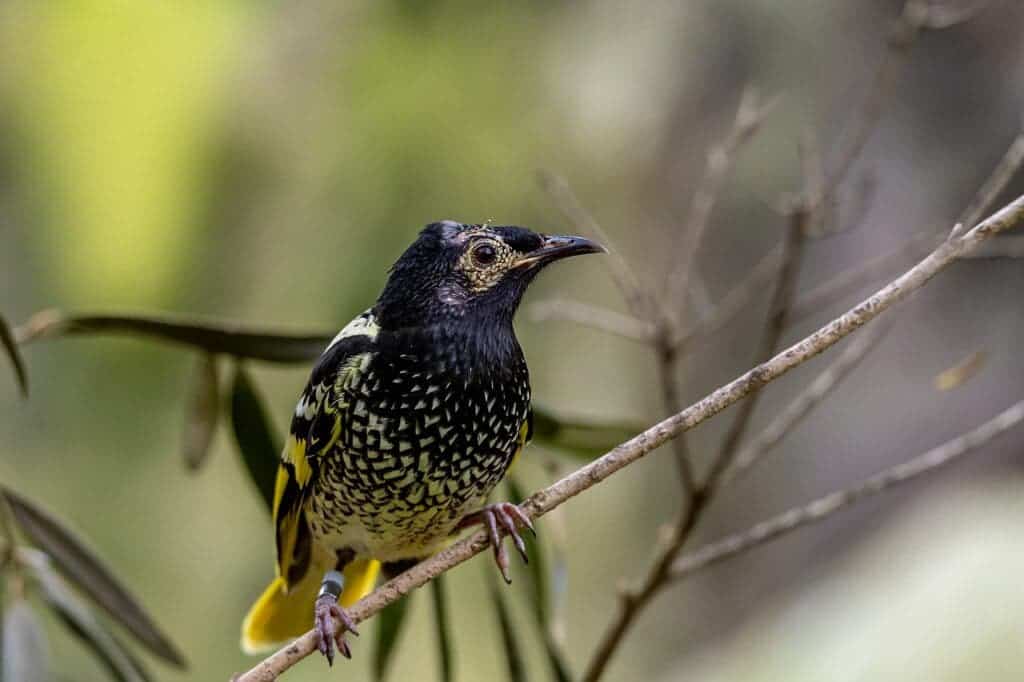It’s an unusual year for Australian music charts. An album made entirely of tweets and squawks from endangered bird species has entered the top five, surpassing the likes of Michael Bublé, Mariah Carey, and Justin Bieber to reach one of the top positions. Called Songs of Disappearance, the album features the songs of 53 threatened species, with all proceedings donated to BirdLife.

The album is the result of a collaboration between BirdLife, David Steward (who has recorded sounds of Australian birds during the last four decades), and the Bowerbird Collective – a project by performers Simone Slattery and Anthony Albrecht to explore the connection between art and science through a multimedia platform. Apparently, it’s quite the hit.
“The title track celebrates the incredible diversity of the Australian soundscape, and highlights what we stand to lose without taking action. Be immersed in a chorus of iconic cockatoos, the buzzing of bowerbirds, a bizarre symphony of seabirds, and the haunting call of one of the last remaining night parrots,” the album’s website reads.
Songs Of Disappearance is the first album of its type to appear in the top 10 of Australia’s Aria chart. It has already sold over 3,000 copies, including sounds from extremely rare species from Australia such as the regent honeyeater (Anthochaera phrygia) and the night parrot (Pezoporus occidentalis).
The album is currently fifth in Australia, just behind Adele’s 30, Ed Sheeran’s =, Paul Kelly’s Christmas Train, and Taylor Swift’s Red. The rest of the top 10 is formed by ABBA’s Voyage, Michael Bublé’s Christmas, Olivia Rodrigo’s Sour and Doja Cat’s Planet Her. The ranking changes every week. Needless to say, Songs of Disappearance is the first non-human entry on the list.
Birds under threat
As heartwarming as the album is, the situation of these birds is anything but uplifting.
A once-in-a-decade study published this month found that one in six Australian birds are currently threatened, with the climate crisis pushing species closer to extinction. Researcher Stephen Garnett of Charles Darwin University found that 216 out of 1,299 species are threatened – more than the 195 that were under threat back in 2011.
Of the 216 endangered birds, 87 were listed as vulnerable, 74 as endangered, 32 as near-threatened, 21 as critically endangered, and two as possibly extinct. The study found that 96 species are doing worse than a decade ago, listing them on a higher threat category. There were also 23 birds that are doing better and were downlisted.
Among the new birds under threat, the researchers identified 17 that live in cooler, higher-elevation rainforests in Queensland. The list includes the fernwren (Oreoscopus gutturalis), whose numbers have dropped almost 60% since 2000, the golden bowerbird (Prionodura newtoniana), and the Victoria’s riflebird (Ptiloris victoriae).
The study, known as the Action Plan for Australia’s Birds, found that global warming and the extreme weather events that it triggers such as bushfires were a key factor in the growing threat to Australia’s birds. The country was severely hit by bushfires a year ago, especially the New South Wales state, with over one billion trees that were burnt.


